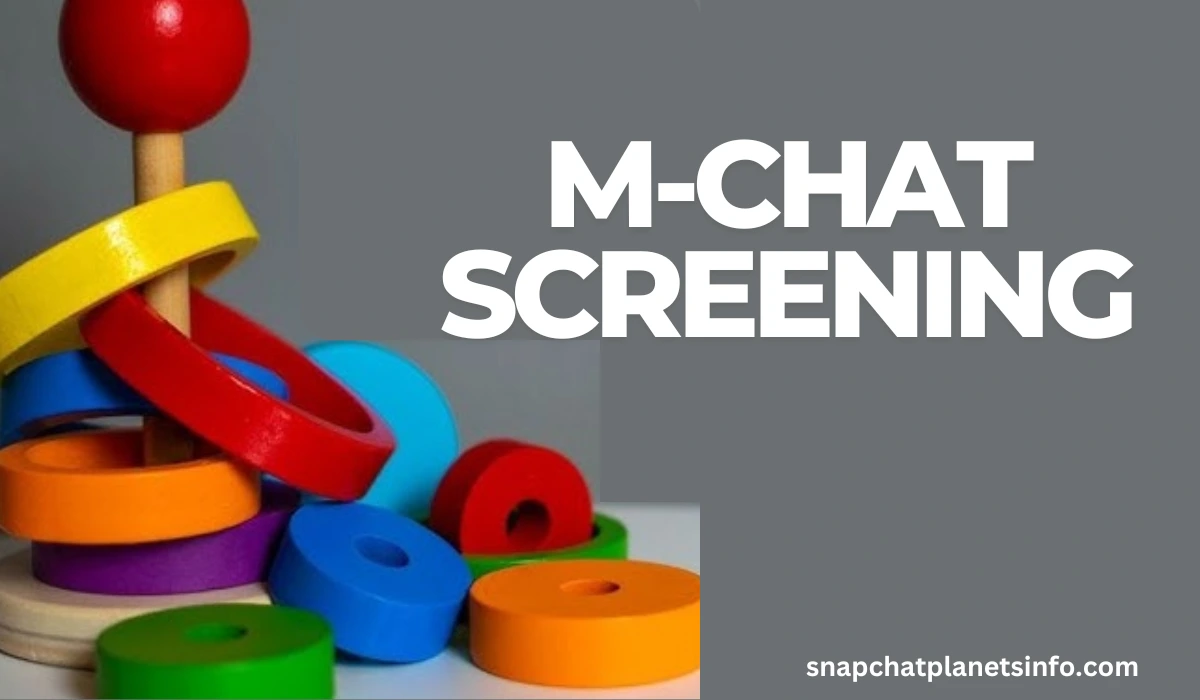Identifying developmental disorders like Autism Spectrum Disorder (ASD) early in life can significantly impact a child’s future. One of the most effective tools for this is the M-CHAT screening. The Modified Checklist for Autism in Toddlers (M-CHAT) is a simple questionnaire designed to spot early signs of autism in toddlers. In this article, we’ll explore how M-CHAT screening works, its importance, and how it benefits both parents and healthcare providers.
What is M-CHAT Screening?
M-CHAT screening stands for the Modified Checklist for Autism in Toddlers. It is a scientifically validated tool created to identify children between 16 and 30 months who may be at risk for autism. Developed by Diana Robins, Deborah Fein, and Marianne Barton in 1999, this screening tool has become a standard part of many pediatric checkups.
The screening consists of 20 yes/no questions that parents answer based on their child’s behavior. The questions focus on social interactions, communication skills, and repetitive behaviors. Some examples include:
- Does your child take an interest in other children?
- Does your child respond when you call their name?
- Does your child enjoy playing peek-a-boo?
These simple questions help detect behaviors that may indicate autism or other developmental delays.
| Aspect | Details |
| Age Range | 16 to 30 months |
| Number of Questions | 20 Yes/No questions |
| Risk Categories | Low, Medium, High |
| Follow-Up | Structured interview for medium/high-risk cases |
| Digital Availability | Available via apps and online forms |
Why is M-CHAT Screening Important?
Early intervention is key in managing autism, and M-CHAT screening helps detect signs before a child turns three. Many children with autism can benefit from therapies that improve communication, social skills, and learning if diagnosed early. Without tools like M-CHAT, these signs might go unnoticed until later, delaying necessary support.
The M-CHAT aims to maximize sensitivity. This means it tries to identify as many potential cases of autism as possible. However, this also results in a high false-positive rate. While some children flagged as “at risk” may not have autism, they could still have other developmental issues that need attention.
Read more: Riley andersen chat
How Does M-CHAT Screening Work?
The process is straightforward. Parents or guardians complete the M-CHAT during a routine pediatric visit. The pediatrician then reviews the answers and scores the checklist.
If the child fails a certain number of items, they are considered at risk. The risk levels are usually categorized as follows:
| Risk Level | Failed Items | Next Steps |
|---|---|---|
| Low Risk | 0-2 | No immediate concern, rescreen later |
| Medium Risk | 3-7 | Conduct a follow-up interview |
| High Risk | 8 or more | Refer for a comprehensive developmental evaluation |
For children in the medium-risk category, a structured follow-up interview is conducted. This follow-up helps clarify any concerns and reduces false positives.
The Updated M-CHAT-R/F Version
Over time, the original M-CHAT was revised to improve accuracy. The latest version, known as M-CHAT-R/F (Revised with Follow-Up), has a lower false-positive rate. This means fewer children are incorrectly flagged as “at risk.” It also has higher sensitivity, which ensures more children with autism are identified early.
M-CHAT using the revised version is even more reliable. Pediatricians and specialists can confidently use this tool to catch early signs of autism and guide families towards appropriate resources.
Digital Advancements in M-CHAT Screening
With the rise of technology, M-CHAT screening has become more accessible through digital platforms. Tools like the PTI App allow parents to complete the screening online using smartphones, tablets, or computers. This digital version adapts to the device and presents questions one at a time, making it user-friendly.
Once the questionnaire is completed, it is scored electronically. The system generates an in-depth report that includes a summary and trend analysis. Healthcare providers can print these results, upload them into electronic medical records, or share them as PDFs.
Digital M-CHAT also allows for remote assessments. Parents can receive links via text or email, complete the screening from home, and send the results directly to their child’s doctor. This flexibility has made early autism detection even more efficient and widespread.
Benefits of M-CHAT Screening for Parents and Healthcare Providers

For parents, M-CHAT screening offers peace of mind. It helps answer questions about their child’s development and provides a clear path forward if any concerns arise. Early identification through M-CHAT means children can access therapies and support sooner, improving their long-term outcomes.
For healthcare providers, M-CHAT is a quick, reliable tool that can be easily integrated into regular check-ups. The screening takes just a few minutes to administer and score, yet it provides valuable insights into a child’s development. The structured follow-up interview ensures that results are accurate and actionable.
Understanding M-CHAT Screening Results
It’s important to remember that M-CHAT screening is not a diagnostic tool. Failing the screening does not mean a child has autism. Instead, it signals that further evaluation is needed.
For example, a child who doesn’t respond to their name might have a hearing issue rather than autism. Similarly, a child who avoids eye contact might be shy rather than on the autism spectrum. That’s why follow-up interviews and comprehensive evaluations are essential after a failed M-CHAT.
Common Misconceptions About M-CHAT
Many parents worry that a failed M-CHAT screening automatically means their child has autism. This is not the case. The screening is designed to be highly sensitive, which means it casts a wide net. This approach ensures that no potential cases are missed, but it also means that some children who fail the screening might not have autism.
Another misconception is that M-CHAT is only for children showing obvious signs of developmental delays. In reality, the screening is recommended for all toddlers between 16 and 30 months, even if they appear to be developing typically. Early signs of autism can be subtle, and routine screening helps catch them before they become more apparent.
M-CHAT Screening in Different Settings
While M-CHAT screening is commonly used in pediatric offices, it’s also valuable in other settings. Early childhood educators, speech therapists, and other specialists can use the screening to identify children who may need further evaluation.
In some cases, M-CHAT is used in research to study autism prevalence and early developmental patterns. Its standardized format and widespread acceptance make it an ideal tool for both clinical and research purposes.
Read more: Trillian chat widow always opens full screen
Frequently Asked Questions
What age should my child take the M-CHAT screening?
The M-CHAT screening is designed for toddlers between 16 and 30 months of age. It’s usually part of routine well-child visits during this developmental stage.
What happens if my child fails the M-CHAT?
Failing the M-CHAT doesn’t mean your child has autism. It indicates that further evaluation is needed. Your pediatrician may conduct a follow-up interview or refer you to a specialist for more comprehensive testing.
Can I complete the M-CHAT at home?
Yes, many healthcare providers offer digital versions of M-CHAT that can be completed from home. You can receive a link via text or email and submit the results to your doctor.
Is M-CHAT accurate?
M-CHAT is highly sensitive, meaning it’s good at identifying children who may be at risk for autism. However, it has a high false-positive rate, so additional evaluations are necessary for an accurate diagnosis.
Conclusion
M-CHAT screening is a powerful tool for detecting early signs of autism in toddlers. By identifying potential developmental issues early, it allows children to receive the support they need to thrive. Whether used in a pediatrician’s office or through digital platforms, M-CHAT screening plays a critical role in ensuring children’s developmental health is closely monitored. Early detection leads to early intervention, and that can make all the difference in a child’s life.
